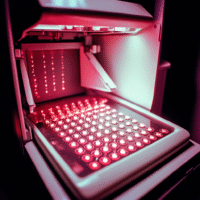Understanding the Study Results
This study looked at two ways to control a special type of prosthetic arm for people who have lost their arm below the elbow. The two methods are:
- Amplitude and Threshold Control (ATC): A traditional method that can be tricky for complex movements.
- Pattern Recognition (PR): A newer method that uses machine learning to understand muscle signals, making it easier to control the prosthetic naturally.
What Worked and What Didn’t?
The study found that the new method, called Reduced-Contact Pattern Recognition (RC-PR), worked better than ATC. Here’s what was discovered:
- Participants using RC-PR performed better in tests measuring their ability to move and manipulate objects.
- Users preferred RC-PR because it felt more natural and intuitive.
How Does This Help Patients and Clinics?
The results show that RC-PR can improve daily life for people using prosthetics, making it easier to do everyday tasks. Clinics can offer better options for their patients, leading to higher satisfaction and better use of the prosthetic arm.
Real-World Opportunities
Hospitals and doctors can:
- Start using the RC-PR method in their prosthetic programs.
- Educate patients about the benefits of this new technology.
- Invest in training for staff to effectively use and teach this new method.
Measurable Outcomes to Track
Clinics should keep track of:
- Patient satisfaction levels after using RC-PR.
- Improvement in manual dexterity and functional abilities.
- Overall quality of life changes for patients.
AI Tools to Consider
Clinics might look into AI tools that help analyze muscle signals for better control of prosthetics. These tools can enhance the effectiveness of the RC-PR system.
Step-by-Step Plan for Clinics
Here’s how clinics can start using these findings:
- Begin by training staff on the RC-PR system.
- Introduce the method to a small group of patients.
- Collect feedback and measure outcomes to see improvements.
- Gradually expand the use of RC-PR to more patients based on positive results.
For more details on the study, you can visit the full research article here.





























